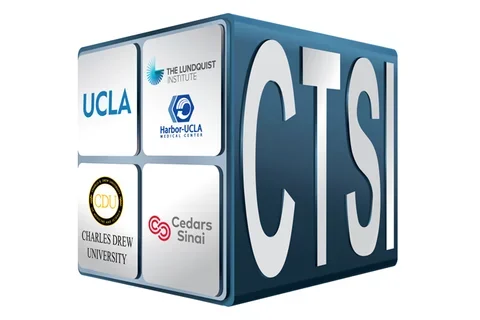CTSI KL2 scholar helps identify key differences in lungs of cystic fibrosis patients

Researchers’ catalog of airway cell types could reveal targets for future genetic therapies
A team of researchers from UCLA, Cedars-Sinai and the Cystic Fibrosis Foundation has developed a first-of-its-kind molecular catalog of cells in healthy lungs and the lungs of people with cystic fibrosis.
The catalog, described in the journal Nature Medicine, reveals new subtypes of cells and illustrates how the disease changes the cellular makeup of the airways. The findings could help scientists in their search for specific cell types that represent prime targets for genetic and cell therapies for cystic fibrosis.
“This new research has provided us with valuable insights into the cellular makeup of both healthy and diseased airways,” said Dr. Brigitte Gomperts, a co-senior author of the study and a member of the Eli and Edythe Broad Center of Regenerative Medicine and Stem Cell Research at UCLA. “If you can understand how things work in a state of health, it becomes easier to see what cellular and molecular changes occur in a disease state.”
Authors include CTSI KL2 scholar, Dr. Changfu Yao, and his mentor, Dr. Barry Stripp. Both are investigators within the Cedars-Sinai Health System, a partner institution of the UCLA CTSI.
On May 27, NIH director, Dr. Francis Collins, also shared a blog post on the NIH Director's Blog.
This research was supported by the Cystic Fibrosis Foundation, the Tobacco-Related Disease Research Program, the National Heart, Lung, and Blood Institute, the NIH/NCATS UCLA CTSI, the National Cancer Institute, the W.M. Keck Foundation, Celgene, the Howard Hughes Medical Institute, a Parker B. Francis Foundation Fellowship, a UCLA Broad Stem Cell Research Center Rose Hills Foundation Graduate Scholarship and the UCLA Tumor Cell Biology Training Program.
Read the complete UCLA press release.
image caption: Healthy airways (left) show well-defined layers of ciliated cells (green) and basal stem cells (red). In airways affected by cystic fibrosis (right), the layers are disrupted, and scientists identified a transitioning cell type that combines properties of both stem cells and ciliated cells (red and green in the same cell).
Image source: Nature Medicine



